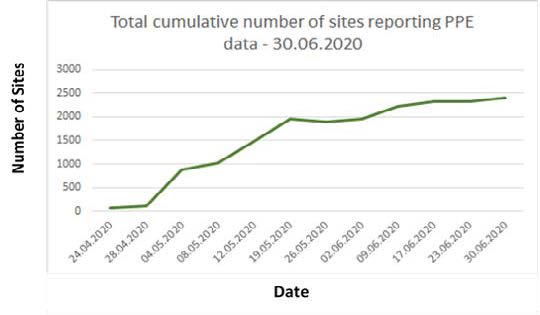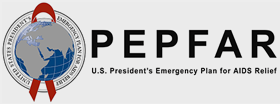With South Africa’s response to the COVID-19 pandemic came the need to manage the supply and availability of PPE at all points of care. Data related to PPE stock-on-hand is critical for planners and coordinators to make decisions about the procurement and allocation of PPE so that all health care workers have the equipment they need to perform their duties safely.
Due to the success of the National Surveillance Center (NSC) in visualizing medicine availability, South Africa’s National Department of Health (NDoH) requested the Affordable Medicines Directorate to support efforts to monitor the availability of PPE at public health establishments through the NSC.
The NSC is the NDoH’s medicine supply chain visibility and performance monitoring tool. Using agreed key performance indicators (KPIs), medicine availability data from health establishments, pharmaceutical depots, and suppliers of medicine is visualized on dashboards, providing a holistic view of medicine availability throughout the South African public health medicine supply chain.
The United States Agency for International Development (USAID)-funded Global Health Supply Chain Program – Technical Assistance (GHSC-TA) was tasked with expanding the functionality of the NSC to include PPE visibility for purposes of monitoring, planning, and reporting to the COVID-19 response team.
GHSC-TA agreed to develop a PPE dashboard that would assist the NDoH in visualizing and understanding the availability of PPE across the country. The first step was to engage with the NDoH to understand the expectations and needs. Secondly, the program needed to access data from numerous hospitals, community health centers, and clinics across the country.
GHSC-TA developed a PPE database where all the PPE data submitted was consolidated in a uniform data structure for quick and seamless updating on the NSC. The program then supported the NDoH and Mezzanine, the contracted supplier of the Stock Visibility System (SVS), to include PPE items for reporting purposes so that all health establishments (mainly clinics) currently using the system could submit PPE stock-on-hand data via the application. SVS was also deployed by Mezzanine to a further 360 hospitals to replace the manual data submission process. This development marked a huge shift as most of the PPE data had previously been populated on Excel sheets and submitted manually via emails to the relevant unit in the NDoH.
The program also documented three KPIs for monitoring of PPE and included these in a PPE KPI dictionary. The program developed 16 PPE dashboard views with drill-down capabilities that provide PPE stock availability at both national and provincial levels. The data includes stock levels of PPE at reporting health establishments per item, as well as a comparison of stock-on-hand against the projected demand forecast for these items.

This initiative has grown exponentially. At its inception in April 2020, a total of 68 health establishments were reporting PPE stock-on-hand data to the NSC. Within eight weeks, the program was visualizing PPE data from 2,403 health facilities, an increase of more than 2,300. At this stage, visibility of PPE stock-on-hand was available for more than 50 percent of all health establishments in the country and 85 percent of hospitals.
GHSC-TA’s rapid and agile response in supporting the expansion of the NSC to include PPE items has contributed directly to strengthening oversight of the supply chain and supporting timeous data-informed decision making. This initiative allows PPE planners and coordinators to ensure that health workers and patients alike have access to critical PPE items at public sector points of care across the country.



